Miles to Go: Long Haul Trucking Insurance Essentials

Why Commercial Liability Coverage Matters: A Deep Dive into its Importance
August 28, 2023Long haul trucking is the lifeblood of commerce in the United States, with thousands of trucks traversing the state’s highways each day, turning in goods to companies and purchasers alike. However, this crucial enterprise also faces tremendous risks and demanding situations. Long-haul trucking insurance serves as a protector, presenting critical protection for trucking businesses and their drivers. In this complete exploration, we will delve into the essentials of long haul trucking insurance, which include its significance, coverage types, and factors that have an effect on prices.
Understanding Long Haul Trucking Insurance
Long-haul trucking insurance, a subset of commercial trucking insurance, is a tailored form of coverage designed for businesses engaged in the transportation of goods over extensive distances. It is not a one-size-fits-all solution; instead, it’s a customized insurance package crafted to address the unique risks associated with long haul trucking.
The Crucial Role of Long Haul Trucking Insurance
- Legal Requirement: First and foremost, long-haul trucking insurance often constitutes a legal obligation. Federal and state regulations mandate that business trucking companies maintain a minimal level of insurance coverage. Non-compliance can cause hefty fines, penalties, and even the revocation of operating licenses.
- Protection Against Liability: Accidents involving large trucks can have devastating consequences. Long-haul trucking insurance coverage presents liability coverage, safeguarding the trucking organization and its driver in the event they are determined at fault in a coincidence that results in physical injury or belongings damage.
- Cargo Protection: The cargo being transported is the lifeblood of the trucking enterprise, and it’s far often of widespread price. Long-haul trucking insurance frequently includes cargo coverage, ensuring that in the unfortunate event of cargo damage or theft, the financial burden does not fall solely on the trucking company.
- Driver Coverage: Truck drivers encounter unique risks on the road. Long-haul trucking insurance often includes coverage for the driver, offering protection in case of injury, illness, or disability.
- Asset Protection: Trucks and trailers are significant assets for trucking companies. Long-haul trucking insurance can cover the cost of repairing or replacing these assets if they are damaged in accidents, fires, or other unforeseen incidents.
Types of Long Haul Trucking Insurance Coverage
- Liability Insurance: This is the cornerstone of coverage, encompassing bodily injury and property damage liability. It ensures protection for the trucking company and its driver in case of accidents for which they are at fault.
- Cargo Insurance: As mentioned earlier, cargo insurance is vital for safeguarding the value of transported goods, especially when dealing with high-value cargo.
- Physical Damage Insurance: This coverage extends to the protection of the truck and trailer itself. It includes coverage for collisions, theft, vandalism, and damage resulting from natural disasters.
- Bobtail Insurance: Bobtail insurance comes into play when the truck is being driven without a trailer attached. This is particularly important for owner-operators who may not be covered by their motor carrier’s policy during such instances.
- Non-Trucking Liability Insurance: Also referred to as “bobtail” insurance, this coverage protects the driver and the truck when they are not under dispatch but are still on the road for personal use.
- Motor Truck Cargo Insurance: This is a specialized form of cargo insurance essential for certain types of cargo, such as hazardous materials, where unique risks are involved.
Factors Influencing Long Haul Trucking Insurance Rates
The cost of long-haul trucking insurance can vary widely due to several factors, including:
- Driving Record: A clean driving record generally results in lower premiums, while a history of accidents or violations can lead to higher rates.
- Cargo Type: The nature of the cargo being transported can significantly impact insurance rates. Hazardous materials, for example, often result in higher premiums due to the associated risks.
- Coverage Limits: Striking the right balance between adequate coverage and cost-effectiveness is crucial. Higher coverage limits can lead to higher premiums.
- Deductibles: Choosing a higher deductible can lower premiums but also means the trucking company will bear a larger share of the financial burden in the event of a claim.
- Geographic Location: The regions where trucks operate can also affect insurance rates. High-traffic urban areas may have higher premiums due to increased accident risks.
- Safety Measures: Implementing rigorous safety measures, driver training programs, and security systems can often lead to reduced insurance costs.
Conclusion
In conclusion, long-haul trucking insurance serves as an indispensable pillar of the trucking industry, offering protection to trucking companies, drivers, and valuable cargo. Familiarizing yourself with the different types of coverage and the factors that influence insurance rates is essential for trucking businesses to make informed decisions regarding their insurance needs. Investing in comprehensive long-haul trucking insurance is not just a legal requirement; it’s a strategic business decision that ensures the seamless and secure operation of a vital industry, enabling these essential miles to be traveled safely and efficiently.


